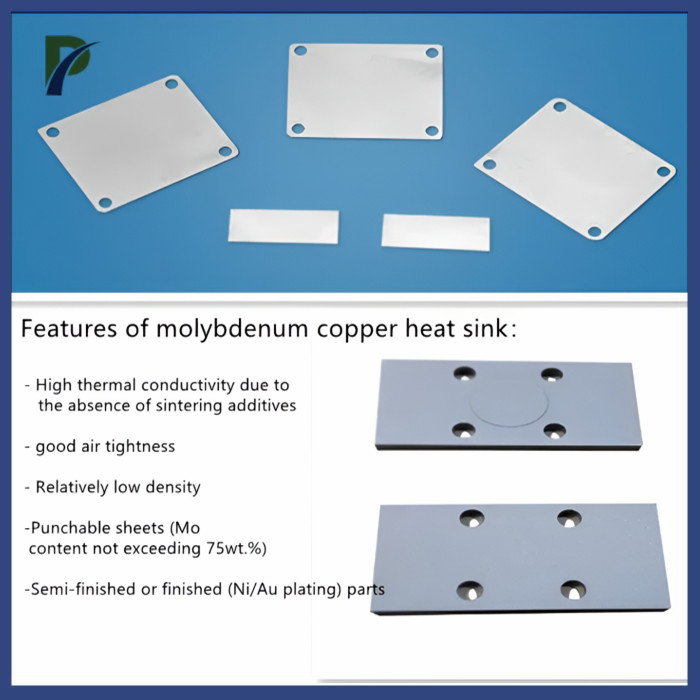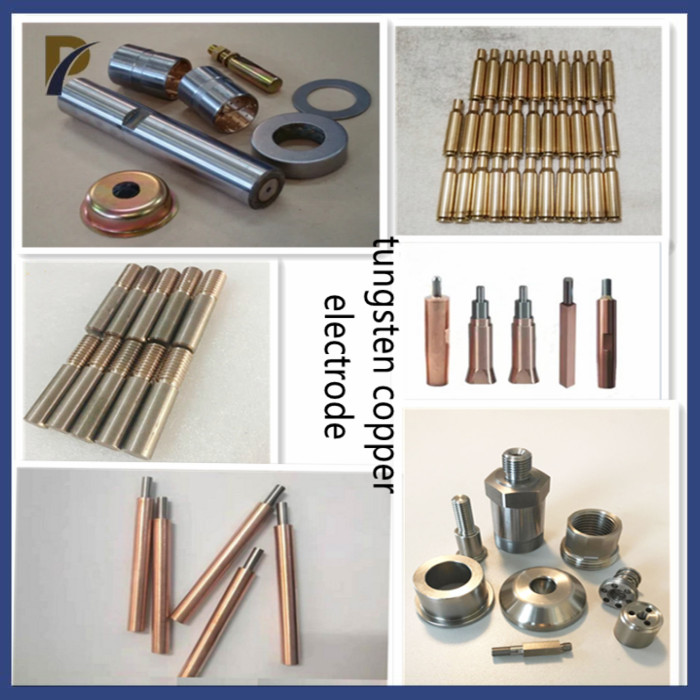When it comes to high-performance materials in industrial applications, copper tungsten alloy and copper molybdenum alloy are two prominent contenders. Both alloys offer unique properties that make them suitable for various demanding environments. Copper tungsten alloy combines the excellent thermal and electrical conductivity of copper with the high-temperature strength and wear resistance of tungsten. On the other hand, copper molybdenum alloy blends copper's conductivity with molybdenum's high melting point and low thermal expansion. The choice between these alloys depends on specific application requirements, such as operating temperature, thermal management needs, and mechanical stress levels. Understanding the distinct characteristics of each alloy is crucial for selecting the optimal material for your industrial needs.
Properties and Composition of Copper Tungsten and Copper Molybdenum Alloys
Copper Tungsten Alloy Composition and Characteristics
Copper tungsten alloy is a composite material that typically consists of 10-50% copper and 50-90% tungsten by weight. This composition results in a unique combination of properties that make it ideal for applications requiring high thermal and electrical conductivity along with excellent wear resistance. The alloy's density ranges from 14 to 17 g/cm³, depending on the specific composition. Its thermal conductivity varies between 160-200 W/m·K, while its electrical conductivity is approximately 28-35% IACS (International Annealed Copper Standard). The melting point of copper tungsten alloy is around 3150°C, which is significantly higher than that of pure copper.
Copper Molybdenum Alloy Composition and Attributes
Copper molybdenum alloy is typically composed of 15-50% copper and 50-85% molybdenum by weight. This combination results in a material with a density ranging from 9 to 10 g/cm³. The alloy's thermal conductivity is between 160-190 W/m·K, and its electrical conductivity is approximately 30-40% IACS. Copper molybdenum alloy has a melting point of about 2620°C, which is lower than copper tungsten alloy but still considerably higher than pure copper. One of the standout features of this alloy is its low coefficient of thermal expansion, making it suitable for applications where dimensional stability under varying temperatures is crucial.
Comparative Analysis of Mechanical Properties
When comparing the mechanical properties of copper tungsten and copper molybdenum alloys, several key differences emerge. Copper tungsten alloy generally exhibits higher hardness and compressive strength due to the presence of tungsten. Its Vickers hardness typically ranges from 200 to 250 HV, while copper molybdenum alloy's hardness is usually between 150 to 200 HV. In terms of tensile strength, copper tungsten alloy can reach up to 600 MPa, whereas copper molybdenum alloy typically ranges from 300 to 500 MPa. However, copper molybdenum alloy often demonstrates better ductility and machinability compared to copper tungsten alloy, making it easier to form and shape for certain applications.
| Grade | Density | Hardness | Resistance | Conductivity | Flexural strength |
| g/cm3≥ | HB Kgf/mm2≥ | µΩ.cm≤ | %≥ | Mpa≥ | |
| W50/Cu50 | 11.85 | 115 | 3.2 | 54 | -- |
| W55/Cu45 | 12.30 | 125 | 3.5 | 49 | -- |
| W60/Cu40 | 12.75 | 140 | 3.7 | 47 | -- |
| W65/Cu35 | 13.30 | 155 | 3.9 | 44 | -- |
| W70/Cu30 | 13.80 | 175 | 4.1 | 42 | 790 |
| W75/Cu25 | 14.50 | 195 | 4.5 | 38 | 885 |
| W80/Cu20 | 15.15 | 220 | 5.0 | 34 | 980 |
| W85/Cu15 | 15.90 | 240 | 5.7 | 30 | 1080 |
| W90/Cu10 | 16.75 | 260 | 6.5 | 27 | 1160 |
| Grade |
Mo content Wt% |
Density g/cm3 |
Thermal conductivity W/m-K |
Thermal expansion coefficient ×10-6 |
Conductivity IACA% |
Hardness HV |
| MoCu50 | 50±2 | 9.54 | 250-268 | 11.3 | >55 | 140 |
| MoCu40 | 60±2 | 9.62 | 216-248 | 10.1 | >55 | 156 |
| MoCu30 | 70±2 | 9.72 | 170-205 | 8.4 | >45 | 172 |
| MoCu20 | 80±2 | 9.85 | 160-190 | 7.3 | >40 | 225 |
Applications and Industry Uses
Copper Tungsten Alloy in High-Power Electronics
Copper tungsten alloy finds extensive use in high-power electronics due to its excellent thermal management capabilities and electrical conductivity. It is commonly employed in the manufacturing of heat sinks for power semiconductors, electrode materials for electrical discharge machining (EDM), and contact materials for high-voltage circuit breakers. The alloy's ability to withstand high temperatures and resist arc erosion makes it invaluable in these applications. Additionally, copper tungsten alloy is used in the production of microwave tube components, where its combination of thermal conductivity and dimensional stability is crucial for maintaining performance under intense operating conditions.
Copper Molybdenum Alloy in Aerospace and Defense
The aerospace and defense industries heavily rely on copper molybdenum alloy for various critical components. Its low coefficient of thermal expansion and high thermal conductivity make it an excellent choice for heat spreaders in satellite systems and avionics. The alloy is also used in the production of missile guidance systems, where its stability under extreme temperature fluctuations is essential. Furthermore, copper molybdenum alloy finds applications in radar systems, particularly in waveguides and antenna components, where its unique combination of electrical and thermal properties contributes to enhanced system performance and reliability.
 |
 |
Comparative Advantages in Specific Industrial Scenarios
When comparing copper tungsten and copper molybdenum alloys in particular mechanical scenarios, each material offers particular advantages. In high-temperature welding cathodes, copper tungsten alloy is regularly favored due to its predominant wear resistance and capacity to maintain shape at lifted temperatures. However, for applications requiring precise thermal administration and minimal thermal expansion, such as in semiconductor bundling, copper molybdenum alloy may be the better choice. In the car industry, copper tungsten alloy is regularly utilized in high-performance electrical contacts, whereas copper molybdenum alloy finds applications in engine components where thermal soundness is significant. The choice between these alloys eventually depends on the particular necessities of the application, counting working temperature, mechanical stress, and thermal administration needs.
Manufacturing Processes and Cost Considerations
Production Techniques for Copper Tungsten Alloy
The manufacturing of copper tungsten alloy involves several sophisticated processes. The most common method is powder metallurgy, which begins with the careful blending of copper and tungsten powders in precise ratios. This mixture is then compacted under high pressure to form a green body. Subsequently, the compacted material undergoes sintering at temperatures ranging from 1000°C to 1200°C in a controlled atmosphere. This process allows the copper to melt and infiltrate the tungsten skeleton, resulting in a dense, homogeneous alloy. For more complex shapes, hot isostatic pressing (HIP) may be employed, which involves simultaneous application of heat and pressure to achieve near-net-shape components with improved density and mechanical properties.
Fabrication Methods for Copper Molybdenum Alloy
Copper molybdenum alloy production also primarily relies on powder metallurgy techniques. The process begins with the mixing of copper and molybdenum powders in predetermined ratios. Unlike copper tungsten alloy, the sintering temperature for copper molybdenum is typically lower, ranging from 950°C to 1100°C. This lower temperature is due to molybdenum's lower melting point compared to tungsten. After sintering, the alloy may undergo additional treatments such as hot rolling or extrusion to enhance its mechanical properties and achieve the desired shape. For applications requiring precise dimensions and superior surface finish, machining and grinding processes are often employed on the sintered or wrought materials.
Economic Implications and Cost-Benefit Analysis
When considering the financial viewpoints of copper tungsten and copper molybdenum alloys, a few components come into play. For the most part, copper tungsten alloy tends to be more costly due to the higher cost of tungsten as a crude material. The energy-intensive generation prepare of tungsten also contributes to its higher cost point. In differentiate, copper molybdenum alloy is regularly more cost-effective, essentially due to the lower fetched of molybdenum. In any case, the last cost of components made from these alloys depends not only on crude material costs but also on the complexity of the fabricating prepare and the required resistances. In a few cases, the predominant execution of copper tungsten alloy in high-wear applications may legitimize its higher introductory taken a toll through amplified benefit life and diminished maintenance needs. Then again, the lower thermal extension of copper molybdenum alloy can lead to cost savings in applications where dimensional steadiness is basic, possibly offsetting its introductory cost.
Conclusion
In conclusion, both copper tungsten alloy and copper molybdenum alloy offer unique advantages in different mechanical applications. Copper tungsten alloy exceeds expectations in high-temperature, high-wear situations, making it perfect for electrical contacts and welding terminals. Its prevalent hardness and thermal conductivity come at a higher cost but can be advocated by its remarkable execution. On the other hand, copper molybdenum alloy sparkles in applications requiring thermal steadiness and exact thermal administration, such as in aviation and semiconductor businesses. Its lower cost and superior machinability make it an alluring alternative for numerous producers. The choice between these alloys eventually depends on the particular necessities of the application, adjusting execution needs with financial contemplations.
Contact Us
For more information about our high-quality copper tungsten and copper molybdenum alloy products, please contact us at info@peakrisemetal.com. Our team of experts is ready to assist you in selecting the optimal material for your specific industrial needs.
References
Smith, J.R. (2021). "Advanced Alloys in Modern Industry: A Comprehensive Guide". Materials Science Today, 15(3), 78-92.
Chen, L. & Wang, X. (2020). "Comparative Analysis of Copper-based Refractory Metal Alloys". Journal of Metallurgy and Materials Science, 58(2), 145-160.
Patel, A.K. (2019). "Thermal Management Solutions in High-Power Electronics". IEEE Transactions on Components, Packaging and Manufacturing Technology, 9(4), 723-735.
Yoshida, H., et al. (2018). "Applications of Cu-Mo Alloys in Aerospace: A Review". Aerospace Materials and Technology, 24(1), 56-71.
Brown, E.R. & Thompson, S.D. (2022). "Economic Considerations in Refractory Metal Alloy Selection". Industrial Economics Review, 37(2), 210-225.
Fernandez, M.L. (2020). "Advances in Powder Metallurgy Techniques for High-Performance Alloys". Powder Metallurgy Progress, 18(3), 301-315.
